Currently the best blooms are happening at the lower elevations in locations such as Wilson Canyon and the Pinto Basin. The color show is moderately spectacular. Unusually high temperatures following a cool wet winter have caused some plants to dry out quickly, but good color shows are still happening. Please avoid trampling vegetation so that these native annual species can successfully reproduce, and so that other visitors can enjoy witnessing the bloom too!
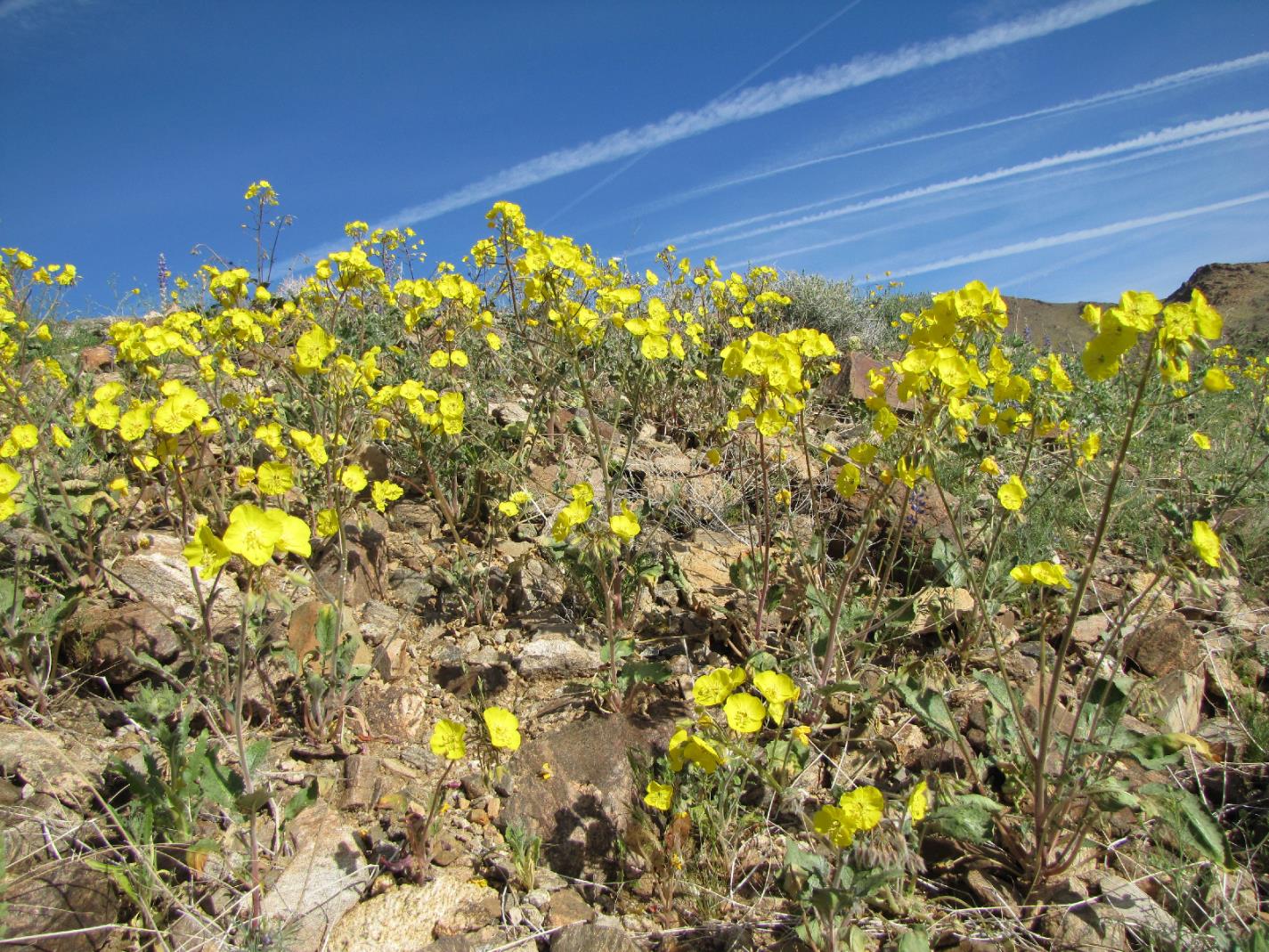
Yellowcups in Wilson Canyon are turning the slopes a bright yellow color. Photo: NPS / Neil Frakes
Wilson Canyon
Perhaps the best area to currently view wildflowers is Wilson Canyon, south of White Tank Campground and north of the Cholla Cactus Garden. There are limited pullouts for parking along Pinto Basin Road. The slopes of the side canyons are turning yellow with yellowcups (Chylismia brevipes). Other common wildflower species in Wilson Canyon include browneyes (Chylismia claviformis), purple mat (Nama demissa), sand blazingstar (Mentzelia involucrata), desert chicory (Rafinesquia neomexicana) and phacelia (Phacelia spp.)![Sand blazingstar [Mentzelia involucrata] a pale white flower with a pinkish center grows in gravel](/images/sandblazingstar_neilfrakes_1.jpg)
![purple mat [Nama demissa] tiny purple flowers grow on the ground's surface](/images/purplemat_neilfrakes_2.jpg)
Sand blazingstar (top) and purple mat (bottom) are some of the showy flowers found in Wilson Canyon. Photos: NPS / Neil Frakes
Pinto Basin
The massive valley in the center of the park, called Pinto Basin, is currently another good location for wildflower viewing. In between the creosote bushes you will find a carpet of cream colored flowers called browneyes (Chylismia claviformis). If you are looking closely, you might spot a desert lily (Hesperocallis undulata) or the magenta flowers of sand verbena (Abronia villosa). Desert gold (Geraea canescens) makes a yellow carpet in some areas, as do poppies. Phacelia adds some purple to the mix. The beavertail cacti (Opuntia basilaris) are also blooming. Desert star (Monoptilon belliodes) is common. Look for desert five spots (Eremalche rotundifolia). Try stopping for a walkabout from Turkey Flats or Porcupine Wash. You may see evening primrose (Oenothera spp) in sandy areas. If you are prepared with plenty of water, and have four-wheel drive, check out the Black Eagle Mine Road for some good wildflower blooms. The poppies are abundant a short distance down this sandy dirt road from the paved Pinto Basin Rd.![desert lily [Hesperocallis undulata] white flowers with long petals grow from the top of talk stalks under blue sky](/images/desertlily_neilfrakes_1.jpg)
![Desert star [Monoptilon belliodes] small white flowers with yellow centers growing low to the ground](/images/desertstar_neilfrakes_1.jpg)
Desert lily (top) and Desert star (bottom) are some of the highlights in the Pinto Basin. Photos: NPS / Neil Frakes
Cottonwood Springs
There is a widespread bloom along the trail to Mastodon Peak. Poppies and Canterbury Bells (Phacelia campanularia) are common. Also look for budding Ocotillos, and flowering Chia (Salvia columbariae) and Mojave aster (Xylorhiza tortifolia).![Canterbury Bells [Phacelia campanularia] groups of purple flowers grow at the end of branching stalks on a gravel slope](/images/phacelia_neilfrakes_1.jpg)
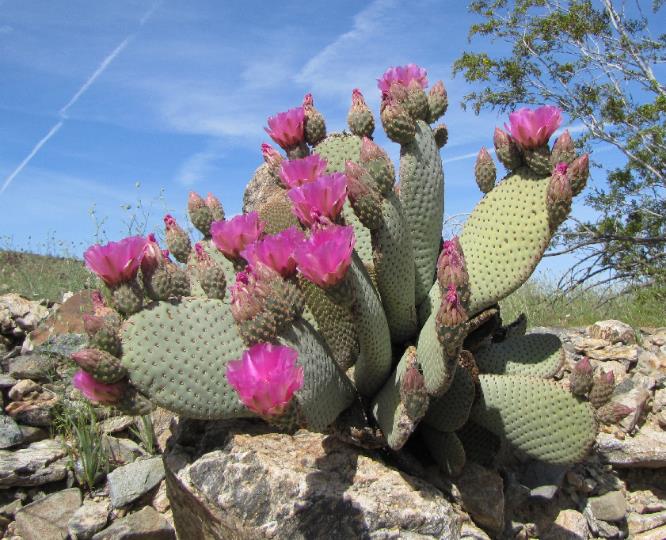
Phacelias (top) add purple, and beavertail cactus (bottom) have bright magenta flowers. Photos: NPS / Neil Frakes
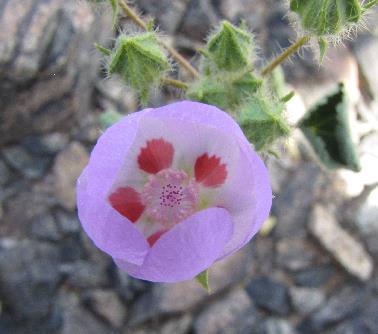
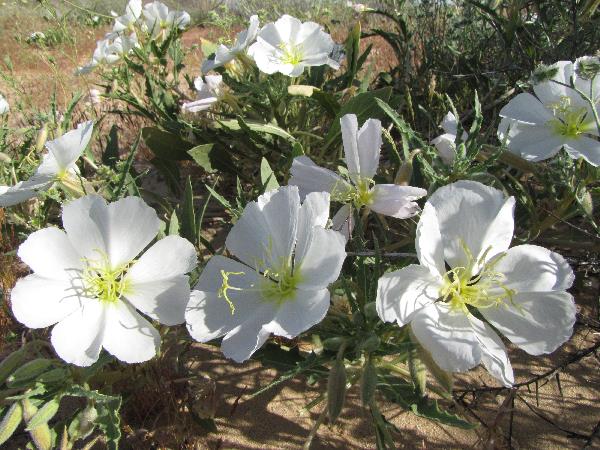
Desert five spot (top) and evening primrose (bottom) are some of the gems in the Pinto Basin. Photos: NPS / Neil Frakes
Joshua Trees and Mojave Yuccas
Joshua trees (Yucca brevifolia) are flowering throughout the areas in which they grow within the park. Some of the hot spots include just inside the Joshua Tree Entrance Station, and near the intersection of Park Blvd and Pinto Basin Road. Mojave yuccas (Yucca schidigera) have also started to flower. Some of the best spots for viewing include just inside the Twentynine Palms Entrance, and Wilson Canyon.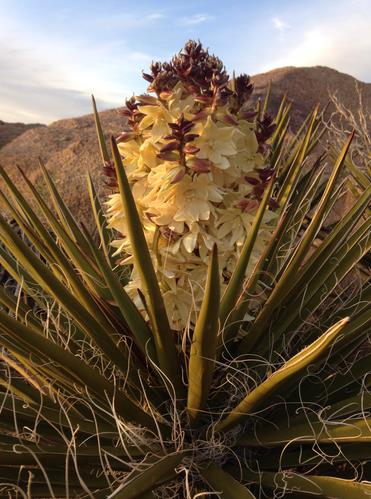
Mojave yucca bloom. Photo: NPS / Neil Frakes
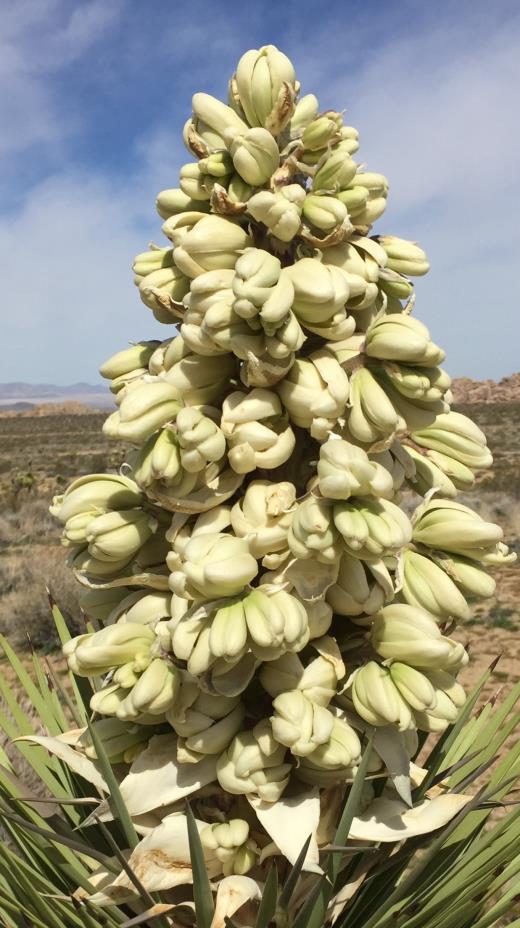
Joshua tree blossom. Photo: Sam King
